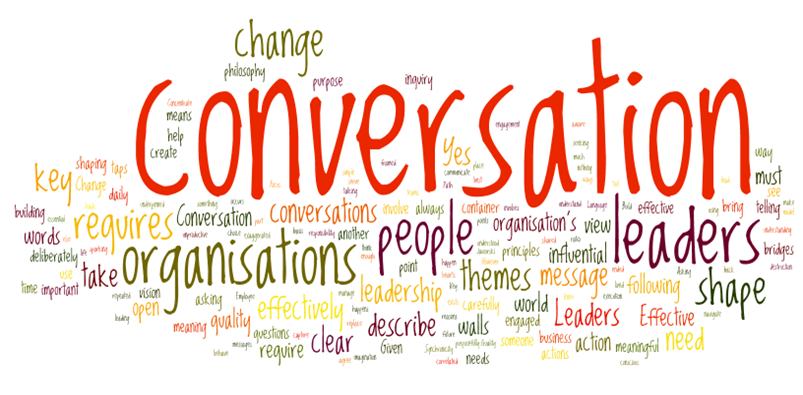Leadership as Conversation
A few years ago Boris Groysberg and Michael Slind suggested that ‘leadership is a conversation’ (HBR 2012). Given our belief in the centrality of the conversation, we naturally found this idea intriguing. In short, they questioned the top-down model of leadership in the face of globalisation, new technology and changes to the economy, society and organisations. Instead, they suggested that part of the solution lay in new ways of communicating between leaders and led, which should become more conversational: ‘intimate’, ‘interactive’ and ‘inclusive’, to create trust and open up the flow of ideas and information; but also ‘intentional’ in order that the organisation can derive strategically relevant action from the debate. It is not without its flaws, but it is a great place to start a conversation.
While leaders may use conversations to achieve their ends that does not mean that all leadership is a conversation. A leader certainly needs to engage in purposeful (intentional) conversations in order to gather as much information as possible in order to generate plans and respond to problems, but at some point the conversation must end and decisions need to be made. There may also be times when a conversation is just not suitable. For example, when dealing with critical problems or crises the leader has to take command. Taking decisive action in a time sensitive environment when collective action would take too long is the perogative of the leader. There is no doubting however, that in order to improve decisions, leaders need all the critical information, both good and bad, to help them understand what is happening. In practice however, encouraging employees to volunteer bad news often proves difficult. In part, this is down to human behaviour, which makes people reluctant to be the bearer of bad news, but it is also an aspect of organisational culture. Changing the mode of communication in organisations from monologue to dialogue is always going to be challenging.
This was recognised by Groysberg and Slind. Differences in authority and responsibility make it difficult to have meaningful conversations, instead the leader will often be told/hear what they want to hear. Simply put, this could be described as the ‘observer effect’, whereby the presence of the leader in a conversation tends to distort what is said. There may be a tendency for people to suggest things to gain favour, impress and create influence, rather than engage in open communication. For internal communication systems to work you need to have genuine interactive leadership, which encourages and rewards a culture of sharing information and the ill-formed thought. Does your organisation have that?
Having the right conversation with the right people is an important goal in any organisation, and when applied in the right context leadership can be a conversation. If leadership is about dealing with uncertainty and deriving innovative responses to complex problems, it is more likely to require collective solutions. In this case, leaders who ask the right questions and encourage honest answers are key. Our suggestion would be to adopt the southern African concept of Ubuntu, which encourages everyone to have an equal voice, then the leader decides






